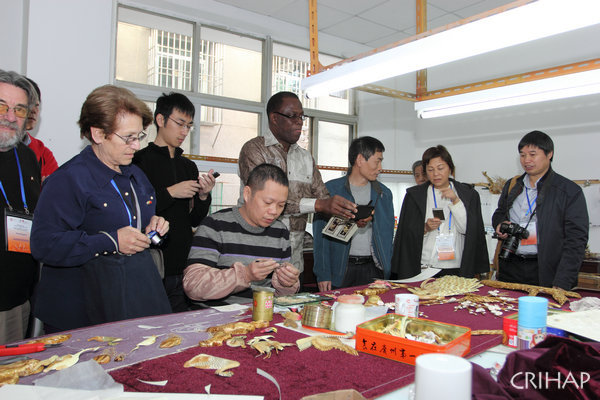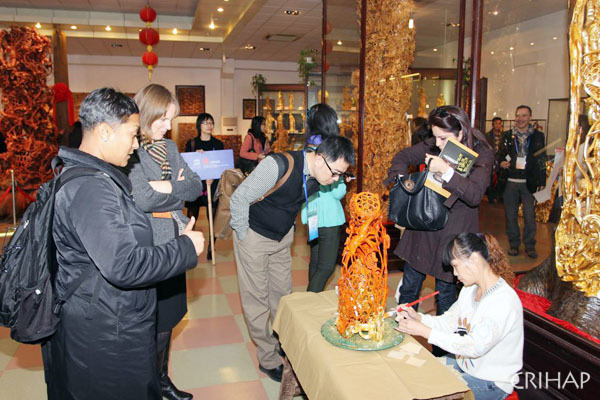Workshop on “Happy Chinese New Year and Safeguarding and Promoting Traditional Festivals”
★ Dawu clay sculpture
Dawu clay sculpture originated in 1237. It draws on themes from Chaozhou Opera and daily life, with various expressive techniques. It was selected in the first batch of national intangible cultural heritage in 2008.
★ Chaozhou ballad
Originating in Chaozhou, this type of ballad is popular in Chaozhou as well as Southeast Asia. It was originally sung by women in the Chaozhou dialect. It was selected in the second batch of national intangible cultural heritage in 2008.
★ Chaozhou congou
People in Chaozhou started drinking congou tea (a black Chinese tea, the etymology of the tea is the same as Kung Fu) in the Song Dynasty (960-1279). By the middle Qing Dynasty, Chaozho congou was popular all over Southeast Asia. Making congou is a very complex and special process and a significant part of traditional culture of Chaozhou. It was selected in the second batch of national intangible cultural heritage in 2008.
★ Guangzhou paper-cut
Paper-cuts originated in the Ming Dynasty (1368-1644) and prospered in the Qing Dynasty. With flowers, fruits, figures, landscapes as its major themes, it is often seen during festivals. It was selected in the first batch of national intangible cultural heritage in 2006, and in the UNESCO Masterpieces of the Oral and Intangible Heritage of Humanity in 2009.
★ Chaozhou straw painting

Representatives watch an artist create straw paintings.
Chaozhou straw painting initially was a kind of textile art, with figures, flowers, landscapes as its major themes. There are two categories of straw painting: natural painting, which keeps the natural color of straw, and dyed painting, where the staw is dyed in various colors. It was selected in the third batch of intangible cultural heritage from Guangdong Province in 2009.
★ Chaozhou wood carving

Representatives observe Chaozhou wood carving.
Chaozhou wood carving originated during the Tang Dynasty, with historical stories, myths and flowers as the major themes. It involves various carving techniques and is often seen in buildings, houses, and public facilities. It was selected in the first batch of national intangible cultural heritage in 2006.

Address: 81, Laiguangying West Road, Chaoyang District, Beijing, China
Zip Code: 100021
Tel: 86-10-64966526
Fax: 86-10-64969281
E-mail: crihap@crihap.cn
Leave us your e-mail address, we'll let you know about current events.



